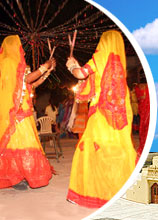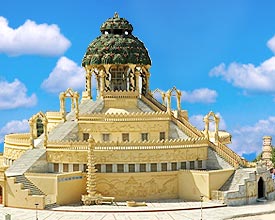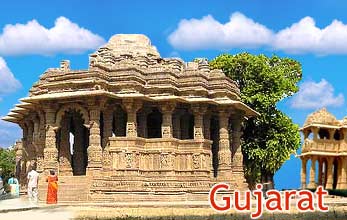 Rani
Roopmati Mosque, situated towards the north of Ahmedabad, is a historic
monument built by Sultan Mehmud Beghara. It is named after his Hindu
wife Rani Roopmati and was constructed during the period of 1430 to 1440
AD. Rani Roopmati was the princess of Dhar, before getting married to
the Sultan of Ahmedabad. Her tomb is also situated near the mosque. The
mosque presents a fine blend of Indo-Sarcenic style and is another
example of extraordinary skilled craftsmanship of Gujarat.
Rani
Roopmati Mosque, situated towards the north of Ahmedabad, is a historic
monument built by Sultan Mehmud Beghara. It is named after his Hindu
wife Rani Roopmati and was constructed during the period of 1430 to 1440
AD. Rani Roopmati was the princess of Dhar, before getting married to
the Sultan of Ahmedabad. Her tomb is also situated near the mosque. The
mosque presents a fine blend of Indo-Sarcenic style and is another
example of extraordinary skilled craftsmanship of Gujarat. The mosque has three domes supported by pillars. The central dome is elevated to provide natural illumination in the mosque. These three domes are connected to each other by a flat roof. Other than this, the other imposing features of the mosque are a high central arch, slim minarets, carved galleries and an exquisite mehrab. It is popularly known as Masjid-e-Nagina. The entrances on the side are flanked by balcony windows. Due to its exquisite structures, it looks like an architectural gem amongst the monuments in Ahmedabad.
The domes are supported by a row of 12 pillars. The smaller domes of the mosque ascend around the four corners and highlight the proportions. The central dome is most uniquely elevated to provide illumination, avoiding the glare of the sun. The mosque lost one of its minarets in the natural calamity in 1818 AD. Apart from this, there are a number of other historic places in the vicinity, belonging to the 15th and 16th century.









